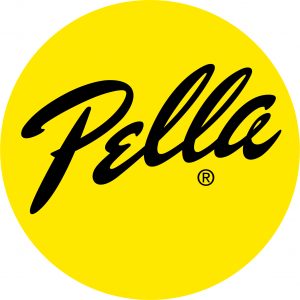The Art of Smart Home Technology
From voice controlled televisions to remote locking on your doors, nearly every appliance and fixture has a smart option on the market today. But smart home technology isn't just voice assistance and fancy fridges - the technology also plays a key role in maintaining the comfort and balance of an energy-efficient home.
We brought in two of our smart home building partners, Tony Pratte from The Sound Room in St Louis and Daren Egan from Peak Audio in Utah, to talk about what it really means to build a smart home. Lars Johansen with Ferguson Bath, Kitchen, and Lighting Gallery also joins us to talk about the newest smart fixtures and appliances that are gaining popularity.
EPISODE TOOL BOX

Season Three, Episode Nine | Transcript
What exactly makes a home “smart”? In this episode of The Art of Custom, We dive into what homeowners really mean when they talk about smart home technology and why “connected home” is the better term.
Guests Tony Pratt of The Sound Room in St Louis and Daren Egan of Peak Audio & Video in Park City, and Lars Johansson of Ferguson Bath, Kitchen & Lighting Gallery explain how today’s homes integrate entertainment, lighting, climate control, appliances, and more through unified systems that improve comfort, efficiency, and convenience.
What Makes a Home “Smart”?
A smart home uses apps to control individual devices. A connected home goes further by integrating all systems into one coordinated platform.
Connected technology allows lighting, security, HVAC, audio, and entertainment to communicate within a single app, simplifying daily life and improving performance.
The Foundation: Network & Infrastructure
Every connected home begins with a reliable internet network. A strong, high-speed Wi-Fi signal and proper low-voltage wiring are as essential as the home’s foundation.
Building this infrastructure during construction supports future upgrades like automated lighting, whole-home audio, and energy monitoring.
Skipping this step limits expandability and creates ongoing frustration with inconsistent performance.
Planning Your System
Homeowners should first identify how they want their home to function—not just how it looks. Builders and integrators help design systems around lifestyle:
- Entertainment and audio zones
- Lighting control and smart blinds
- Security, cameras, and access systems
- Environmental comfort with temperature, air quality, and ventilation control
Once goals are clear, the system can be scaled to fit both budget and future needs. Many homeowners start with structured wiring and networking, adding smart features gradually as they live in the space.
Budgeting for Connected Technology
Technology budgets vary widely. Basic wiring and network packages can start around a few thousand dollars, while full smart-home automation with lighting, audio, and shading may represent 2-5% of a home’s total build cost.
A phased approach allows clients to start small, installing the core infrastructure first, and expand later as priorities evolve or budgets allow.
DIY vs. Professional Integration
Consumer plug-and-play products may work temporarily but often lack the reliability and scalability of professionally designed systems.
Professional integrators focus on robust wiring, system compatibility, and service support ensuring each component communicates seamlessly rather than operating in isolation.
Managing Obsolescence
Technology will always evolve. The key is to future-proof through infrastructure, not short-lived gadgets.
- Quality cabling and panels support decades of upgrades.
- Open-platform systems adapt to new devices.
- Simple, modular controls reduce reliance on heavy programming.
Voice-activated features, automated locks, and security systems continue to improve, while the core network remains timeless.
Partnering with Internet Providers
Even the best systems depend on strong service from internet providers. Builders and integrators design networks to handle high-speed connections today while allowing for faster service in the future.
A well-planned wired and wireless system ensures every room has reliable coverage, which is crucial as more devices and appliances become internet-enabled.
The Future of Connected Living
Connected technology is expanding beyond entertainment and lighting to include appliances, HVAC equipment, and water systems.
Builders are beginning to rely on technology consultants to coordinate these systems, selecting products that integrate seamlessly and simplify homeowner maintenance.
The future connected home will unify every system by monitoring comfort, energy use, and even appliance performance through a single platform.
Smart Appliances and Everyday Technology
Partnering with Ferguson Bath, Kitchen & Lighting Gallery, the episode explores how connectivity has transformed kitchen and bath design.
Highlights include:
- Connected ovens that guide cooking with menu-driven recipes and smartphone alerts.
- Refrigerators with interior cameras for remote grocery checks and digital shopping lists.
- Dishwashers and laundry appliances that send cycle-complete notifications to your phone.
- Bluetooth-enabled mirrors and steam showers that stream music or video for a spa-like experience.
Many of these innovations are now available across a wide range of price points—from entry-level brands to luxury lines which makes connected living accessible to nearly every homeowner.
Innovation on a Budget
Smart technology no longer requires a luxury budget. Entry-level appliances can now connect via Wi-Fi for scheduling, remote control, and efficiency tracking.
Homeowners can start small, adding connected features room by room, while knowing that new devices will continue to integrate with their home’s central network.
Looking Ahead
The smart home market continues to evolve toward full interconnectivity with lighting, appliances, entertainment, and energy systems operating within one ecosystem.
Builders and homeowners who invest in infrastructure today will be ready to adopt the next generation of connected products tomorrow.
Wrapping Up
Episode 8 closes Season 3’s exploration of technology in custom homes with practical advice: build a solid network, plan for expansion, and choose reliable, service-oriented partners.
From comfort to convenience, connected homes are redefining modern living... and the future is only getting smarter.
Special Thanks to Our Sponsors...



